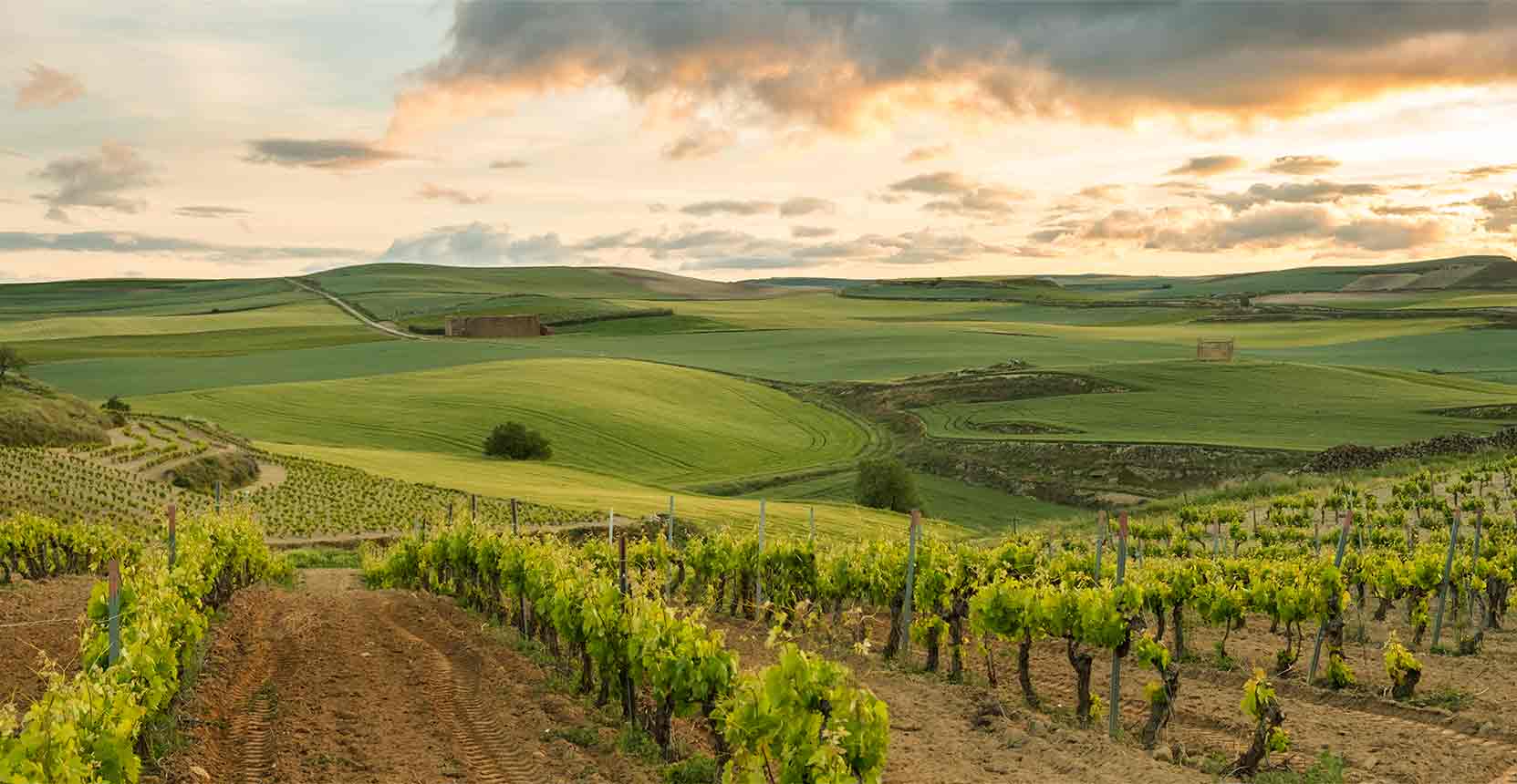A key part of managing any vineyard is dealing with pests and diseases. From Rioja to Barossa, Bordeaux to Napa, every vineyard has to cope with natural threats of some kind.
Among the most common are fungal diseases, including powdery mildew, botrytis and black-rot. There are also parasitic nematodes, and a type of organism called arthropods, which includes spider mites, grapevine moths and the famous phylloxera. Viruses can also affect the vines – fan-leaf, leafroll and corky bark are some of the most commonly found.
The type of challenge usually depends on the climate and location of a vineyard.
In La Rioja, due to the temperature and humidity during the growing season, the main diseases that develop are powdery mildew and downey mildew. Another common problem is the cluster moth (lobesia botrana) which can lead to the occurrence of botrytis cinerea – the fungus, responsible for both noble and grey rot, that causes mushroom aromas and colour instability in wines.
Viticulture at Ramón Bilbao
Ramón Bilbao apply sustainable viticulture, having natural treatments of a biological nature as the main tools.
In the first instance, they manage the cluster moth using pheromones. By using these, the males become disoriented and are unable to fertilise the females.
To control wood diseases, which are a problem worldwide, Ramón Bilbao use trichodermas. Trichoderma is a fungus that has a great affinity for wood and colonises the woody part of the vine, preventing the entry of other fungi.
It is also very important to manage pruning. At Ramón Bilbao pruning is done respectfully, based on the flow of the sap, with fewer cuts. This in turn reduces pruning wounds, which are the main entry points for fungi that ultimately cause secondary diseases.
Another essential aspect at Ramón Bilbao is understanding the development and proliferation of the main fungi, oidium and downey mildew, responsible for diseases in the vineyards. Since 2016, the company has participated in several R&D projects as they seek to know and understand how they behave. Through the monitoring of environmental conditions and mathematical models, they can now determine when the proliferation of these fungi will occur. This means treatments can be applied only when necessary, thus reducing the carbon and water footprint.
Weather stations are also one of the key tools when it comes to knowing what is going to happen in the vineyards. Each of Ramón Bilbao’s vineyards has a weather station installed for perfect monitoring, given them live information including: humidity data, both in the leaf and in the soil; average, maximum and minimum temperatures; intensity of UV radiation; rainfall and wind speed. Ramón Bilbao’s weather stations are paramount for good vineyard and, of course, disease management. They allow them to organise leaf removal when foliar humidity is high or coordinate the harvest according to rainfall forecast.

Bodegas Ramón Bilbao is one of the most prestigious wine brands in Spain and a key reference in Rioja winemaking. Located in the heart of Rioja Alta, Haro, Ramón Bilbao believes in an unconventional spirit, which brings innovation through a unique personal view of the terroir, setting the trend by producing singular wines which are also profoundly in touch with their environment.
To find out more about Rioja and other Spanish regions and their wines, read more articles from Bodegas Ramón Bilbao and The Spanish Wine Academy.








